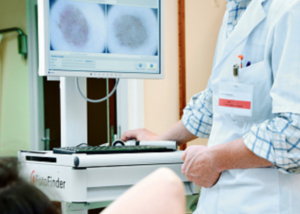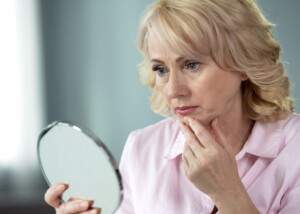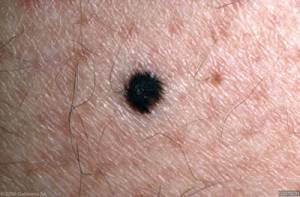
Are you constantly worrying you have melanoma or will soon get it?
Does your mind race with all sorts of scenarios of this cancer invading other parts of your body?
Many people are “cancer phobes” and often they will fixate on one particular cancer. For some of these men and women it’s melanoma.
• Do you check your moles daily, even multiple times a day, for changes? Can’t stop the obsessive checking?
• Perhaps you’ve been focusing on just one particular mole.
• Was your obsession with melanoma triggered by noticing a mole that you don’t think was always there?
• Was your melanoma fear brought on by what seems to be a change in a pre-existing mole?
• Maybe a family member was diagnosed with melanoma?
• Or perhaps you read an article about this deadly skin cancer?
Melanomaphobia
Melanomaphobia can involve repeatedly checking the same mole throughout the day, constantly thinking about it and of course…as we all know…spending hours deep into the night googling information on melanoma and moles.
I’d be lying if I said I haven’t obsessed over at least one mole. There’s ways to overcome melanoma phobia. They are listed below.
Serial Digital Dermoscopy
Where I get this done costs $250. You may already be thinking, “I can’t afford that!”
Think of what you’ve spent about $250 on in the past six months that you didn’t need.
This could be a one-time purchase like a designer handbag, article of clothing, jewelry or exercise equipment, or, it can be multiple items over a several-week or several-month time period.
Examples could be entertainment, the cost of a string of “night on the towns,” a few dinners at a high-end steakhouse, manicures, pedicures, body wraps, electronic games — even junk food will add up.
It’s not as difficult as it seems to save up $250 for something that will significantly diminish your melanoma anxiety.
What is serial digital dermoscopy?
When I went for my first appointment, a dermatologist examined my moles.
Then a nurse, with a washable marker, circled the moles I wanted to be photographed and stored in the computer database.
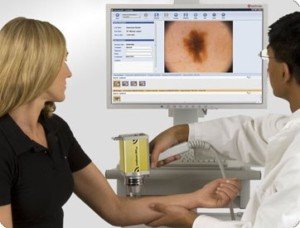
There was nothing unusual or atypical about these moles; but they were located on my back, making it impossible for me to inspect them up close or to detect early changes (heaven forbid).
The computer software rated the moles on a color based scale, where “normal” correlated to a particular color, and “suspicious” correlated to a different color. There were multiple ratings.
The following year I had the same moles photographed, and the images were compared to the previous year’s for any deviations relative to the first images.
The software will detect if there’s a change, then yield an alert to this.
Serial digital dermoscopy does NOT diagnose melanoma; it only detects changes in moles or the presence of suspicious looking moles. It’s up to the doctor to recommend a biopsy.
If the dermatologist, sitting there at the computer, tells you, “All of your moles look very stable,” this will give you loads of reassurance.
But the warranty period on that stability may be short-lived in a person suffering from melanoma anxiety.
After just a few weeks, a severe melanomaphobic may relapse and begin obsessively checking the moles that were photographed.
Speed at Which Melanoma Progresses
Which brings me to the second way to calm your fears. Checking moles from day to day just isn’t worth it.

Shutterstock/pixinoo
There’s a reason why doctors recommend monthly – not daily or even weekly – skin exams.
Just how fast do you think a melanoma will grow or a cancerous mole will change if you check every DAY?
There are people who check the same mole many times in a single day! No skin cancer grows fast enough for a person to see changes from hour to hour, day to day.
Melanoma Cure Rate
• For very early stage melanoma, 5-year survival is over 98 percent (cancer.net).
• Stage IA: The 5-year survival rate is about 97 percent (cancer.org).
• With treatment, those with stage 0 (in situ) melanoma have a 5 and 10 year overall survival rate of 99-100 percent (J Clin Oncol. 2001;19(16):3635-3648).
Furthermore, for stage 0 melanoma, the lifelong surveillance protocol is identical to the lifelong surveillance regimen that many dermatologists recommend for people who’ve NEVER had skin cancer:
• Annual clinical skin exam
• Monthly skin self-exam
It’s also a smart idea to avoid perusing pictures of melanoma on Google Images other than guides to identifying suspicious appearances.
Most of those pictures do not appear to be early stage disease. Many people don’t get diagnosed until the cancer has penetrated the dermis layer of the skin, and even beyond that.
And by then, the melanoma (which may or may not have originated in a pre-existing mole) looks quite ugly.
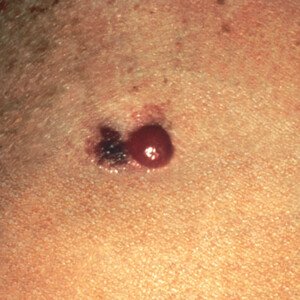
Melanoma. cancer.gov
And by the way, the image at the top of this article is a melanoma, despite its relative symmetry.
A Dermatologist’s Recommendations
“Throw away the magnifying glass,” says Allison Arthur, MD, FAAD, board certified dermatologist with Sand Lake Dermatology Center in Orlando, FL.
“If you are not medically trained, the magnifying glass serves no purpose,” continues Dr. Arthur.
“Find a board-certified dermatologist who you trust and is thorough (checks scalp, behind ears, between toes, etc.) and schedule exams at the frequency that he or she recommends.
“Ask for help monitoring your skin in between dermatologist visits. If you always see the same hair stylist, ask him or her to alert you if there are any new or different spots on the skin of your scalp.
“Ask a trusted family member to check your back periodically.
“If worrying about melanoma occurs most days and is associated with difficulty concentrating, trouble sleeping or has an impact on work, life activities or relationships, please see a psychiatrist, as these could be signs of an anxiety disorder.”

Dr. Arthur is a Mayo Clinic-trained dermatologist and dermopathologist who cares for patients of all ages, providing skin cancer and other medical/surgical treatments, plus cosmetic treatments.
 Lorra Garrick has been covering medical, fitness and cybersecurity topics for many years, having written thousands of articles for print magazines and websites, including as a ghostwriter. She’s also a former ACE-certified personal trainer.
Lorra Garrick has been covering medical, fitness and cybersecurity topics for many years, having written thousands of articles for print magazines and websites, including as a ghostwriter. She’s also a former ACE-certified personal trainer.
.


